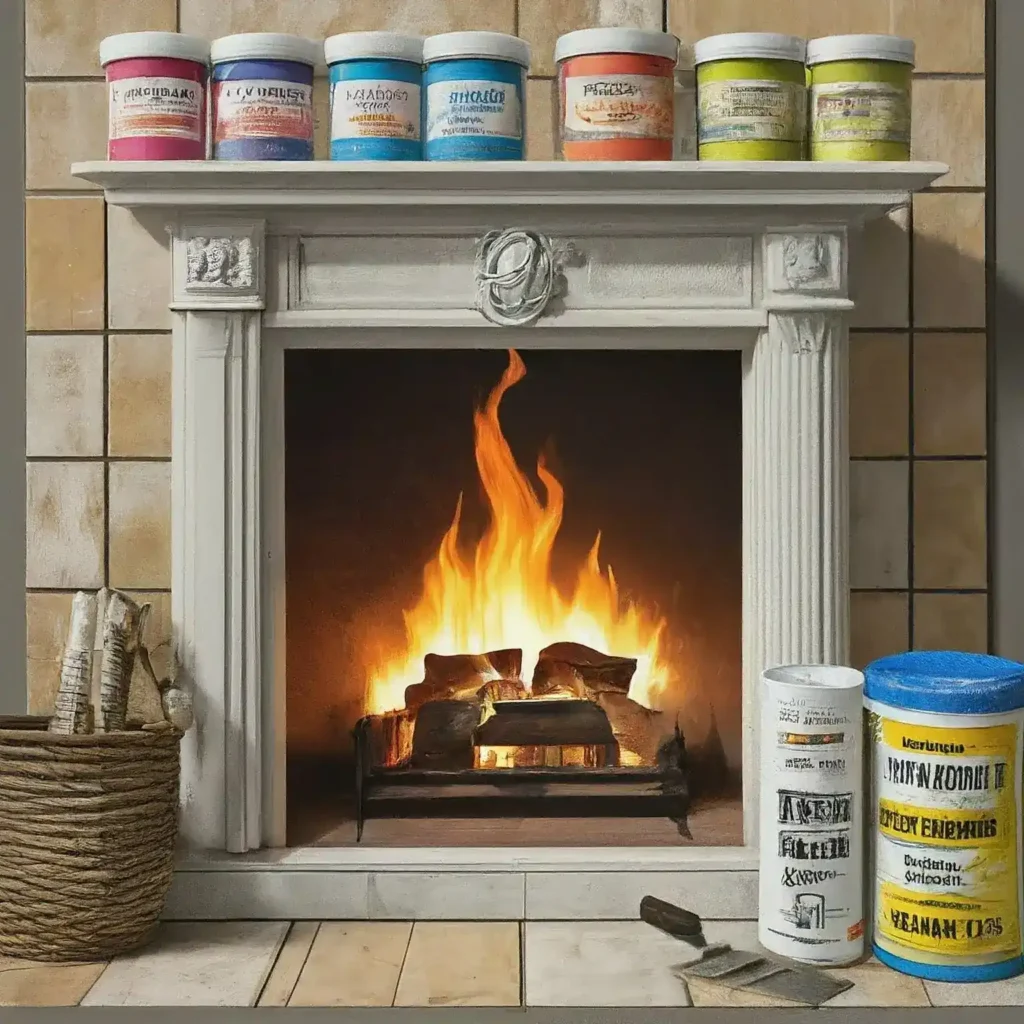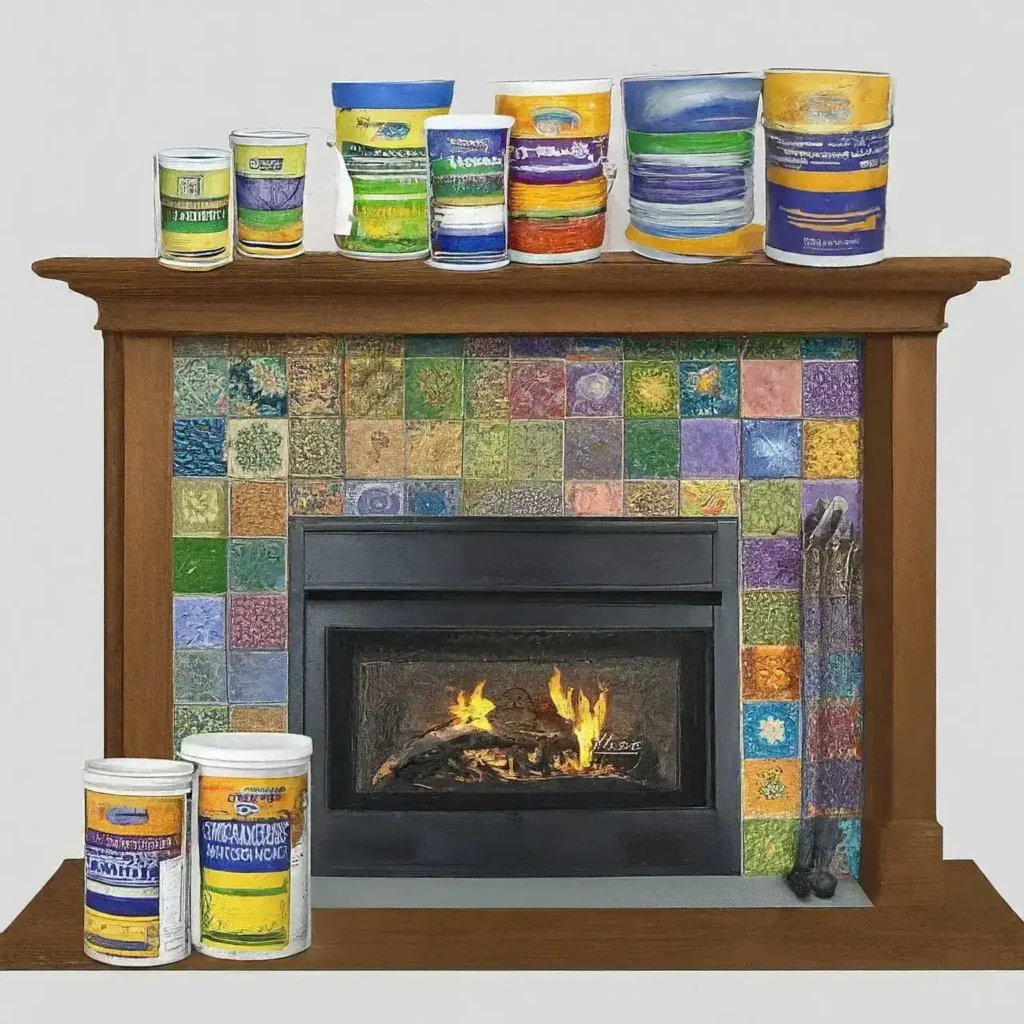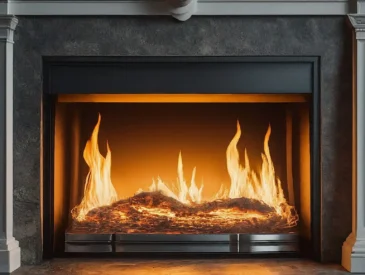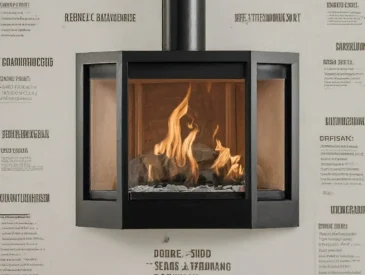Revamping your fireplace can breathe new life into your home’s interior. Whether you’re aiming for a sleek, modern aesthetic with subway tiles or a contemporary vibe with dimensional wood tiles, choosing the correct tile adhesive is crucial. But can you use normal tile adhesive for a fireplace?

In short, it’s not recommended. Instead, opt for a modified thin-set tile adhesive for the surround and refractory mortar inside the fireplace box or flue. Mastic and regular thin-set adhesives are ill-suited for the high heat conditions of a fireplace.
In this guide, we’ll delve into the best tile adhesive options for your fireplace surround, addressing fire resistance, application techniques, and suitable tile choices for the hearth.
Can You Use Normal Tile Adhesive For A Fireplace?
Normal tile adhesive isn’t suitable for a fireplace project. While it may work well for backsplashes or flooring, the unique demands of a fireplace necessitate a different approach. A modified thin-set mortar is the recommended adhesive for a fireplace surround.
Understanding Tile Adhesive Types:
When shopping for tile adhesives, it’s essential to be familiar with the terminology to make the right selection for your project. Here are key terms to know:
Thinset: A standard tile adhesive made of cement, water, and fine sand, commonly used for backsplashes, flooring, and certain bathroom features.
Modified Thinset: This variation contains additives that enhance its strength and performance. It’s the preferred choice for a fireplace surround due to its higher heat tolerance.
Mastic: is another type of adhesive primarily used for wall tiles. It is water-resistant but not suitable for high heat conditions, making it ideal for outdoor applications.
Refractory: Designed to withstand high temperatures, this adhesive is essential for use inside a fireplace box or chimney flue.

Is tile adhesive fire-resistant?
Tile adhesive does possess some inherent fire resistance due to its mortar composition, which includes materials like cement, lime, sand, and water. However, for prolonged exposure to heat, a modified, thin-set mortar is necessary to ensure durability.
While standard thin-set adhesives may not be flammable, they lack the heat resistance required for a fireplace application. Opting for the modified version provides the added strength needed to ensure the tiles around your fireplace remain securely in place.
For projects involving repairs, extra support for a flue joint, or masonry sealing inside a fireplace, a high-heat-tolerant adhesive mortar (refractory adhesive) is essential. Some refractory adhesives can withstand temperatures of up to 2550 degrees Fahrenheit.
How Do You Adhere Tiles to a Fireplace?
Here are the steps to follow when adhering tiles to a fireplace:
Mix your mortar. Spread the mortar onto the backer board or existing masonry. Begin placing the tiles, starting at the top opening, along the centerline, and working upward. Use spacers, and allow the mortar to dry before grouting. Additional Tips for Uniform Tile Placement: Begin with a well-thought-out plan and layout. Use a level or straight edge to ensure proper alignment. Start at the centerline and work outward. Check for level alignment at each row. After spreading the mortar, use a comb to create ridges, facilitating air escape and improving the bond.
Can you put tile over tile?
You can install a new tile over the existing tile if the existing tile is structurally sound. However, if any part of the existing tile is damaged or deteriorating,
it should be removed or repaired before adding the new tile layer. Layering new tile over already compromised tile may trap moisture and mold, potentially leading to adhesion issues.
What Kind Of Tile Can Go Inside A Fireplace?
Masonry materials like cement or fire brick are recommended for the interior of a fireplace. Building codes dictate which materials can be used inside a firebox and chimney.
Heat-resistant tiles such as porcelain and ceramic can be used in areas exposed to fireplace heat, like the hearth. However, it’s important to note that standard tiles should not be placed inside the firebox itself.

How Much Does It Cost To Tile A Fireplace Surround?
The average cost of tiling with ceramic or porcelain tiles ranges from $13.50 to $83 per square foot, including both the cost of the tile and labor.
For a project covering approximately 10 square feet, the estimated total cost falls between $135 and $830. Keep in mind that if you choose to DIY, you’ll also need to budget for additional materials and tools, including a wet saw, trowel, mortars, spacers, level, and grout.





